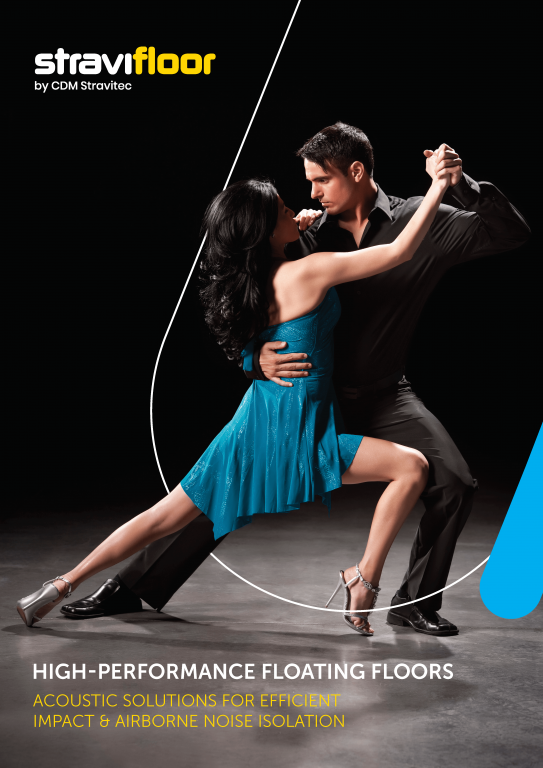Main page content
Entity view (Content)
Stravifloor

Entity view (Content)
The Stravifloor brand represents our product line of high-performance floating floors.
Discover which solution best suits your project, by visiting the solutions area of our website.
High-Performance Floating Floors
Increasing populations density and urbanization is making the standard for low noise and vibration ever more stringent. This is causing an increase in demand for high-quality and efficient noise and vibration isolation systems following the need to build faster, lighter, and with bigger spans.
These trends pose new challenges to the design of high-performance floating floor systems aimed at mitigating vibration, and reducing impact and airborne noise. Stiffening the structure to change its dynamic performance is a suitable but costly measure.
Today, floating floor systems are part of state-of-the-art building technology. They are a cost-effective and efficient option to improve the acoustical performance of our buildings and are commonly part of box-in-box systems installed in high-performance spaces. Floating floors are usually made of poured-in-place concrete or of lightweight panel systems, supported by resilient elements that transfer the loads from the floating floor to the subfloor.
A floating floor system can have three functions, or a combination thereof, depending on the final objective in the building design:
- Airborne Noise Isolation: an increase of the airborne isolation properties of the floor structure. E.g.: floors of mechanical equipment rooms, musical/rehearsal spaces, recording studios, bowling alleys, etc.
- Vibration Isolation: an increase of vibration isolation properties of the structural floor, supporting vibration generating machines. E.g.: floors underneath generators, air-handling units, transformers, pumps, and other building service equipment.
- Impact Noise Isolation: an increase of the impact noise isolation properties of the floor structure. E.g.: floors of rooftop bars, ballrooms, classrooms, hallways, etc.
Related Solutions
-
Information Available to Download
Discover Stravi-dB
Our brand-new online test data platform for Stravifloor and Stravigym solutions is now live!
Save time and register today to easily find the acoustical test reports you're looking for.
